VERY RARE WWI German Zeppelin Corps Paris Airship Aerial Raid Map
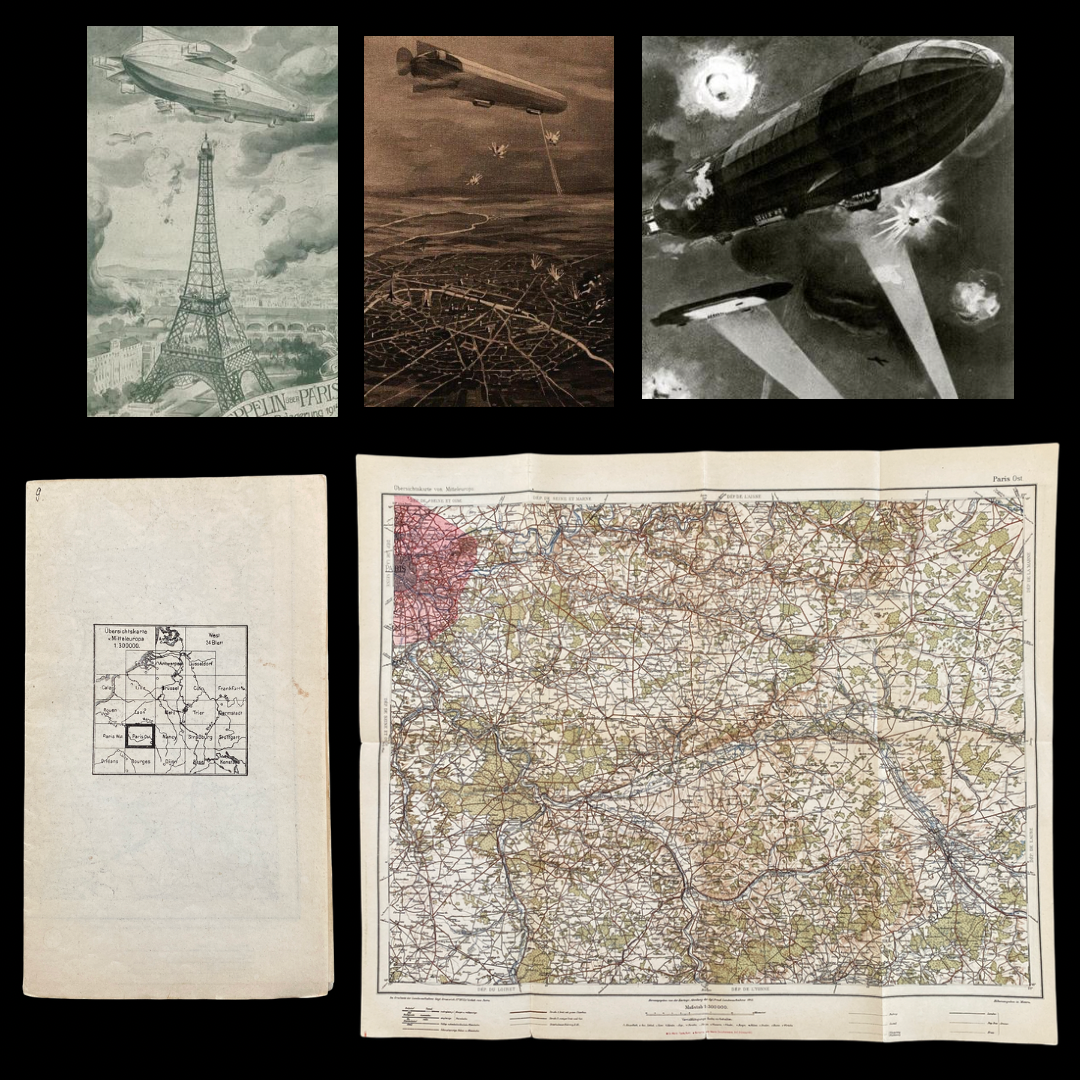
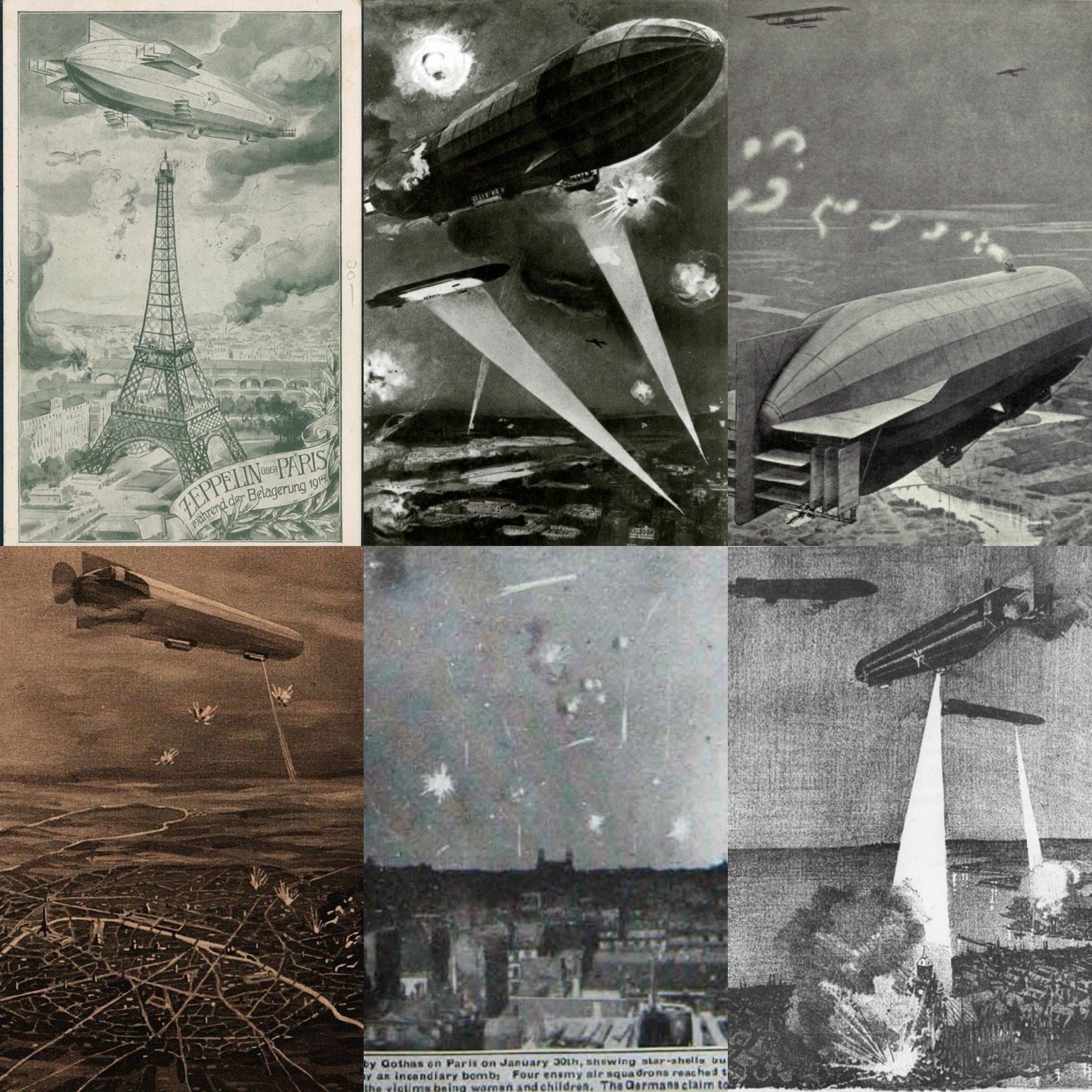
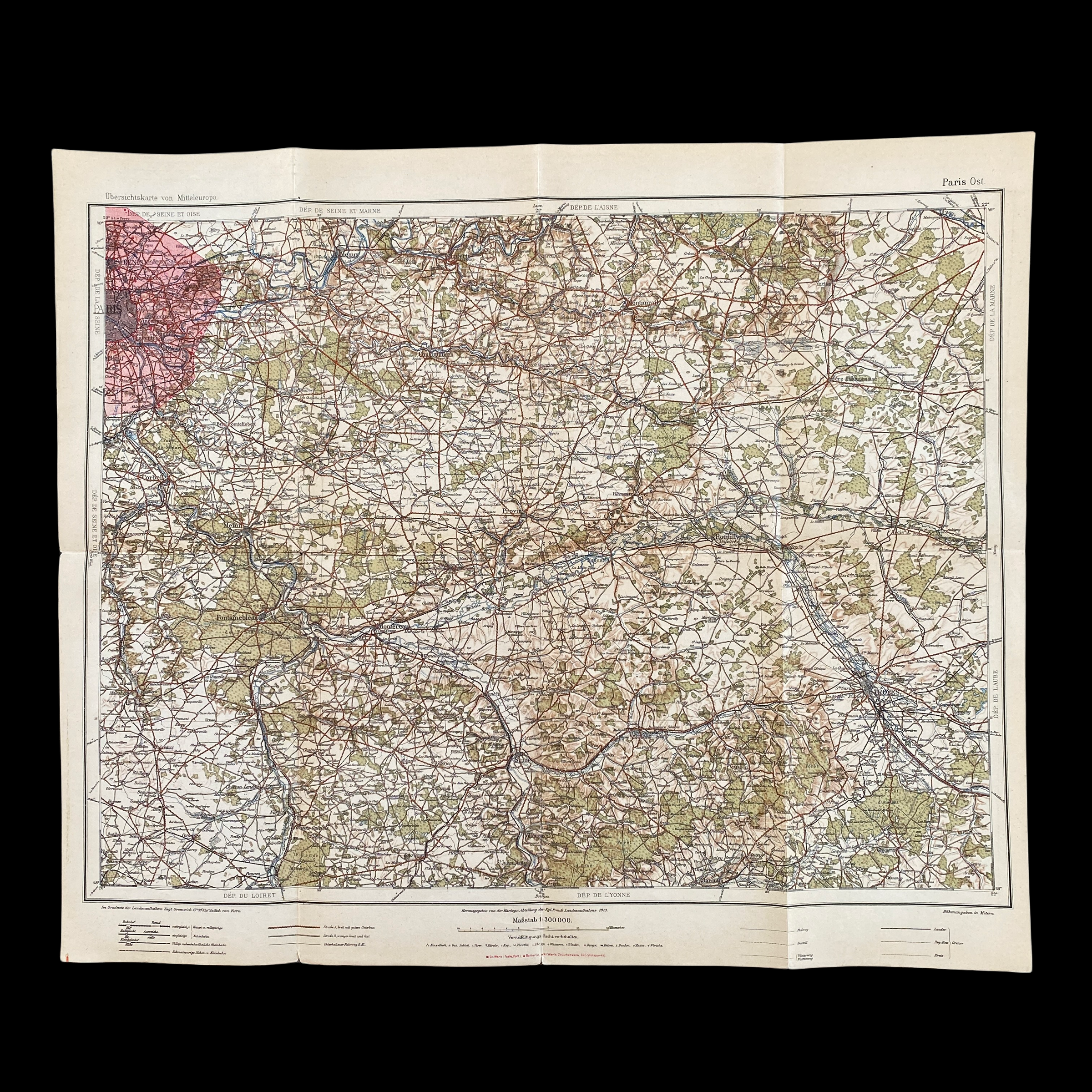
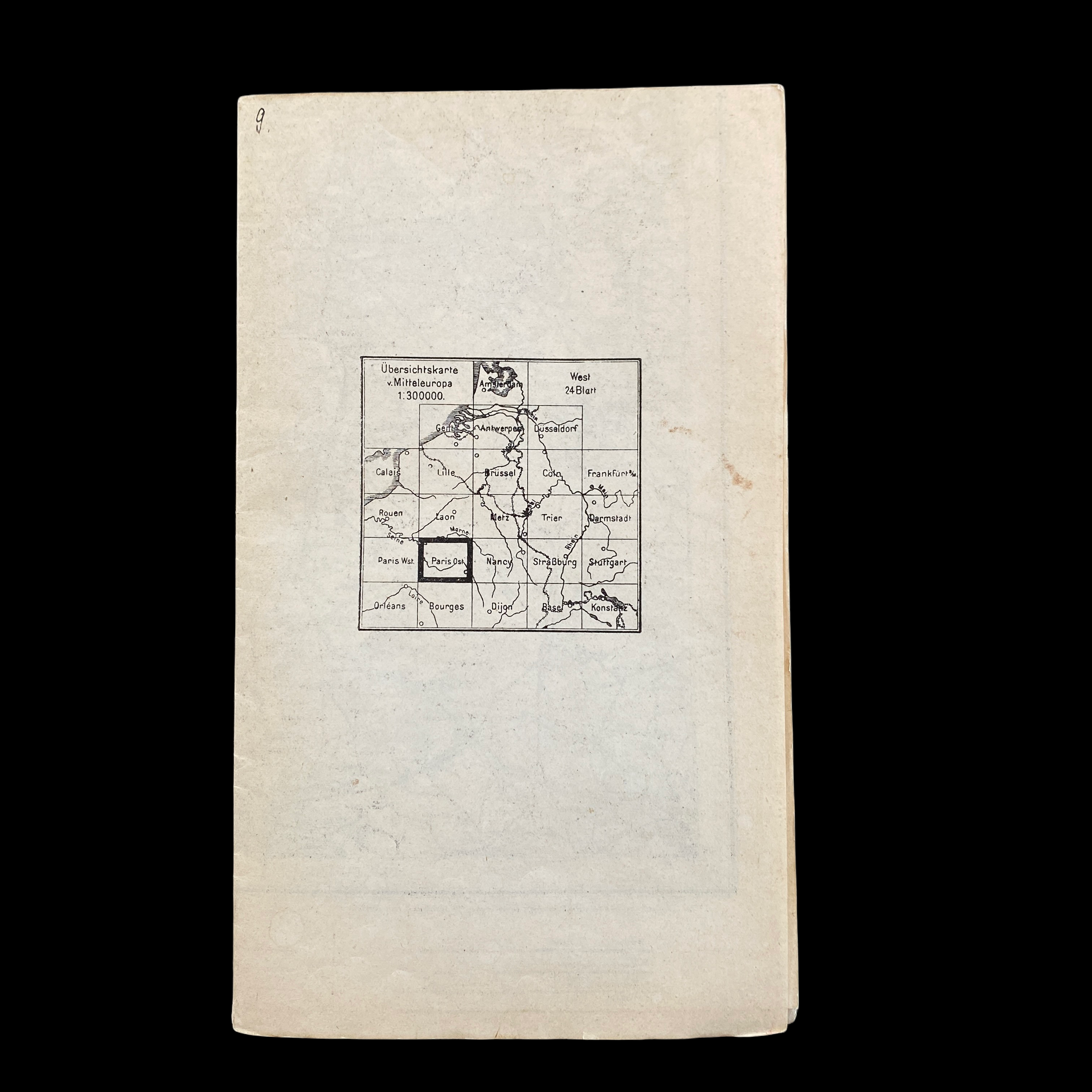



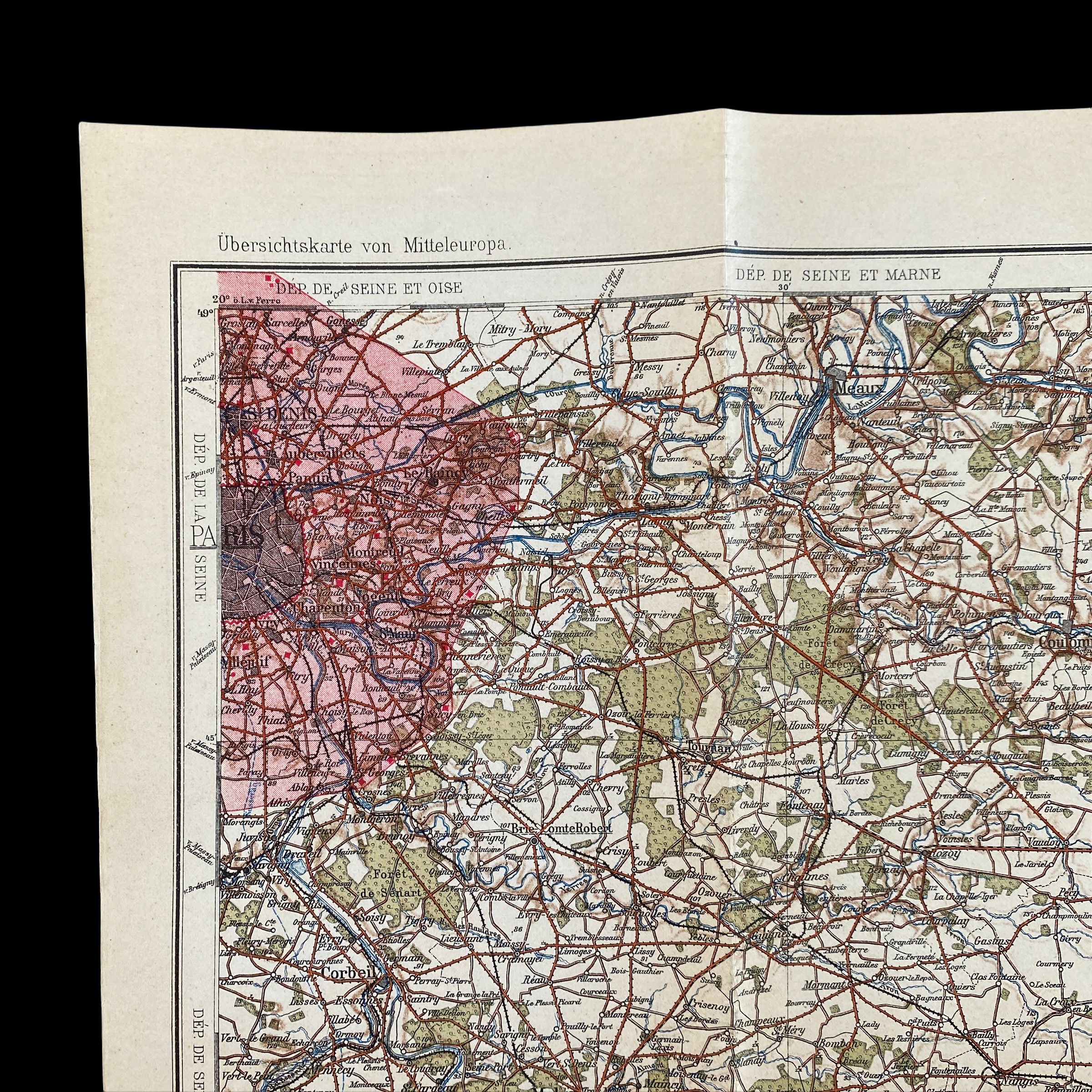
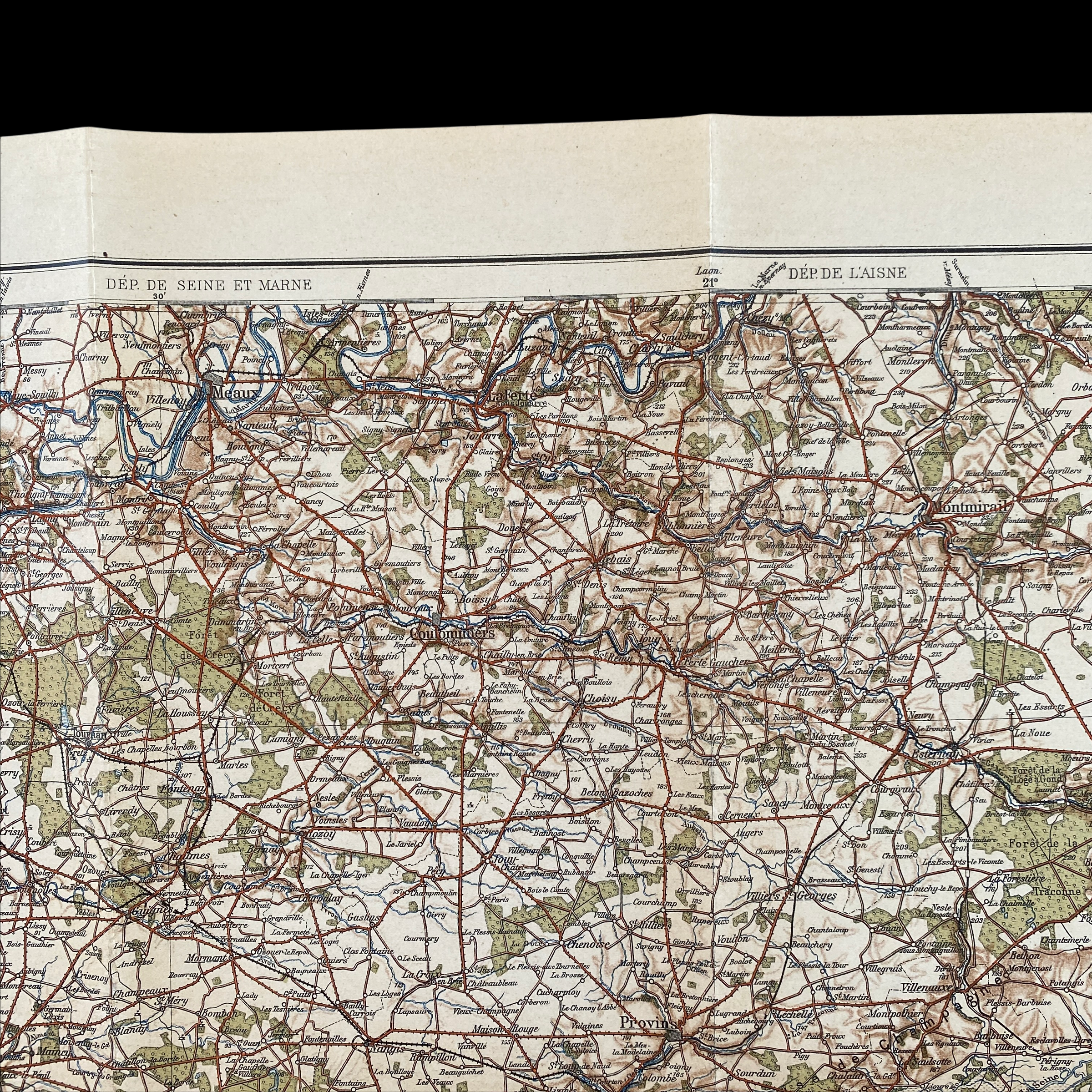
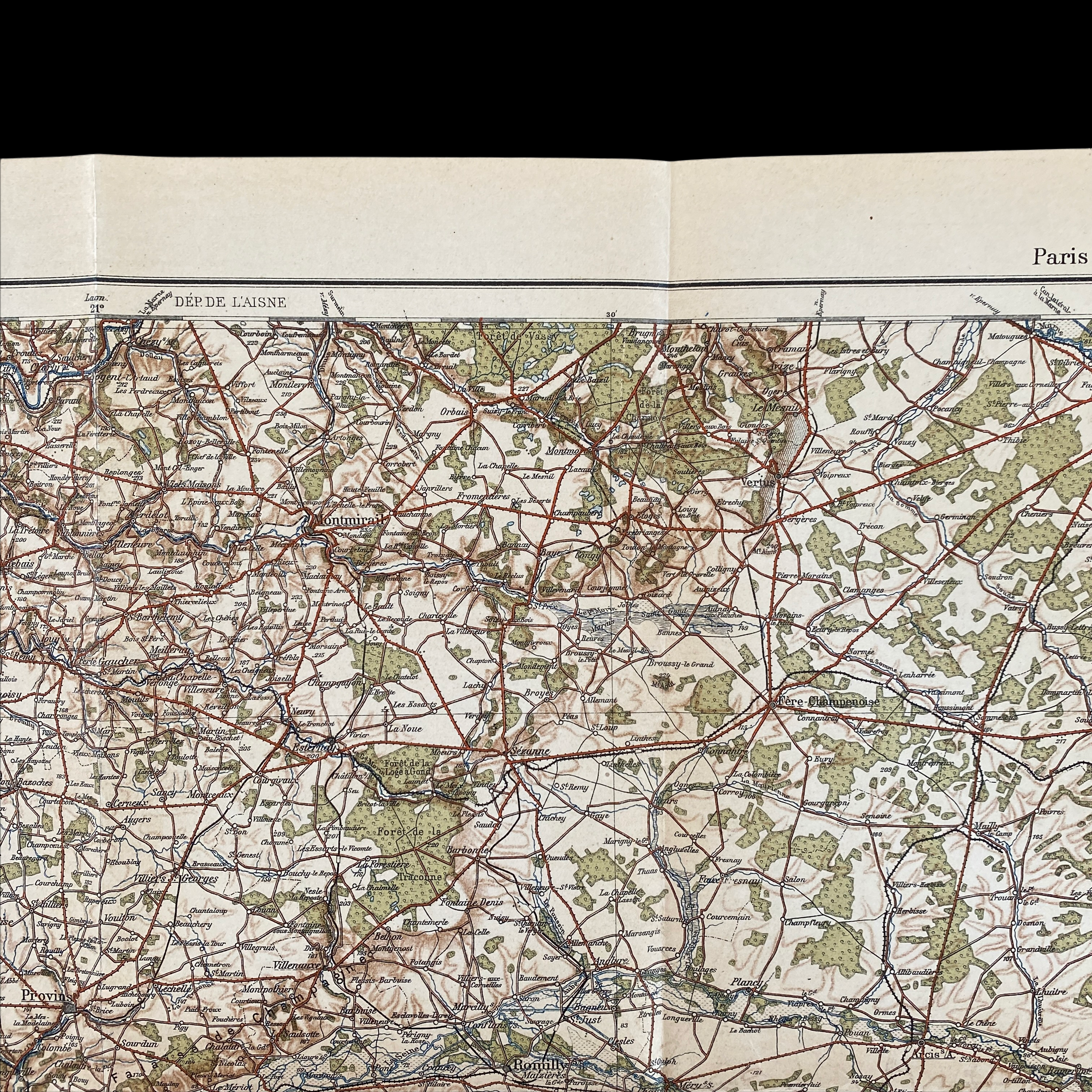
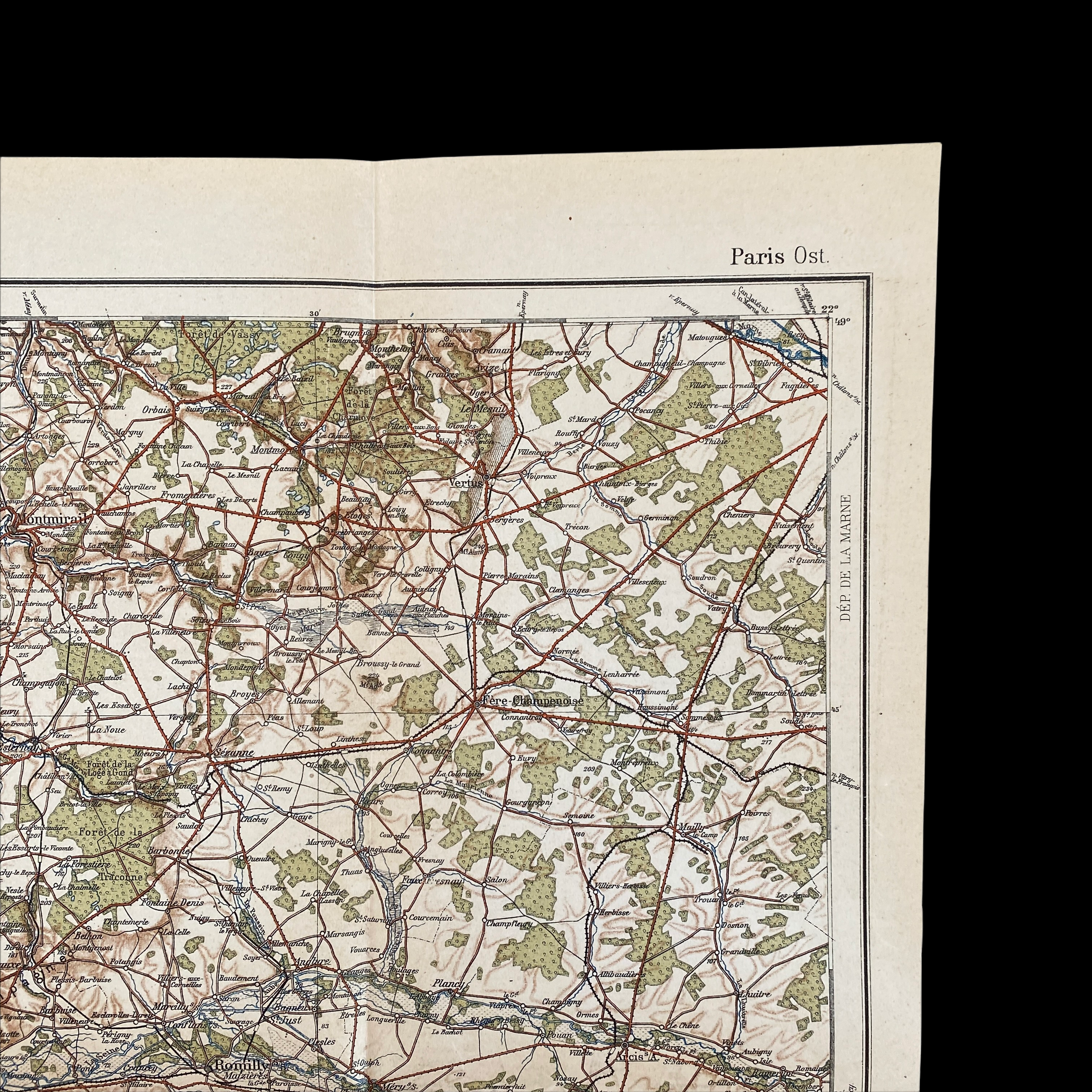
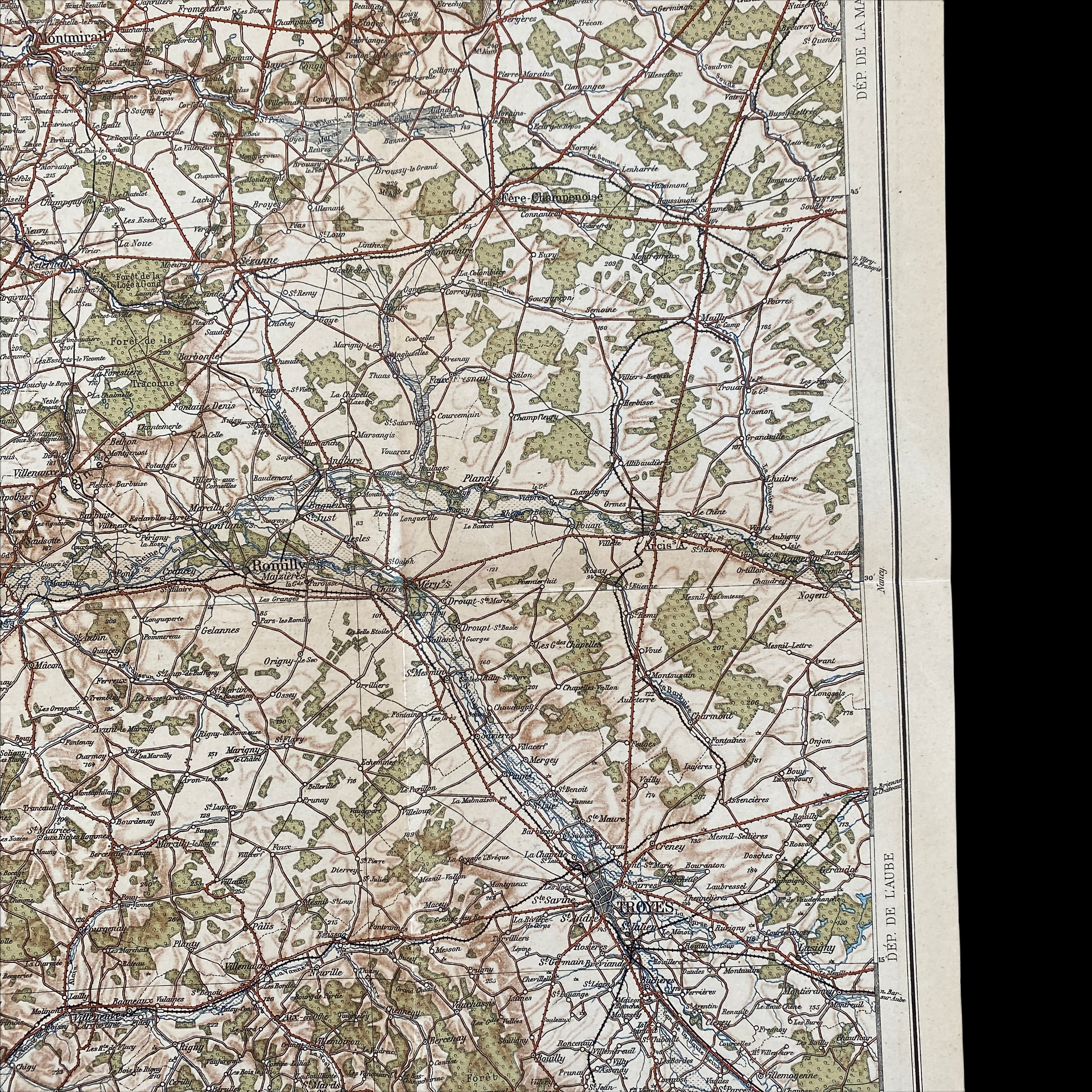
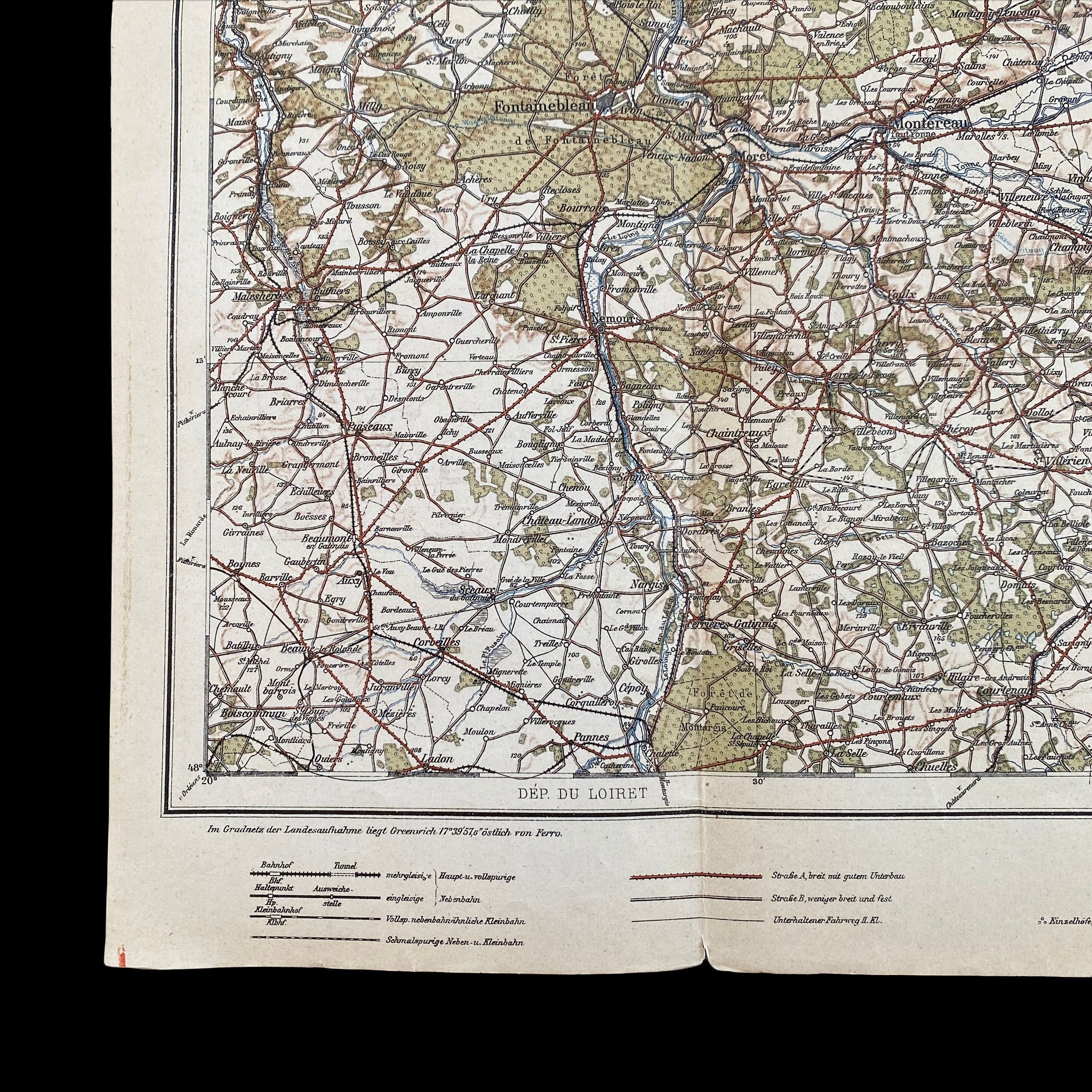
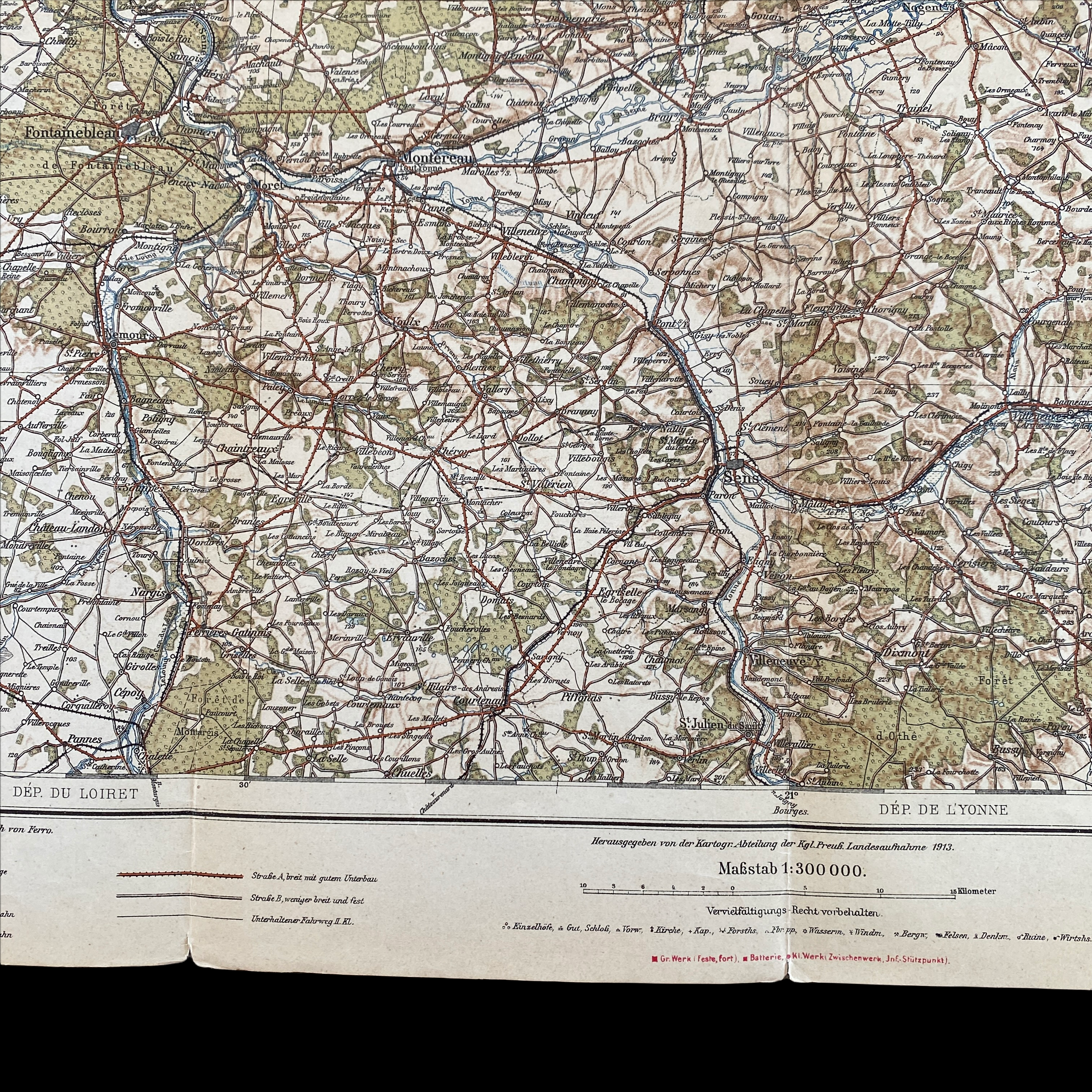
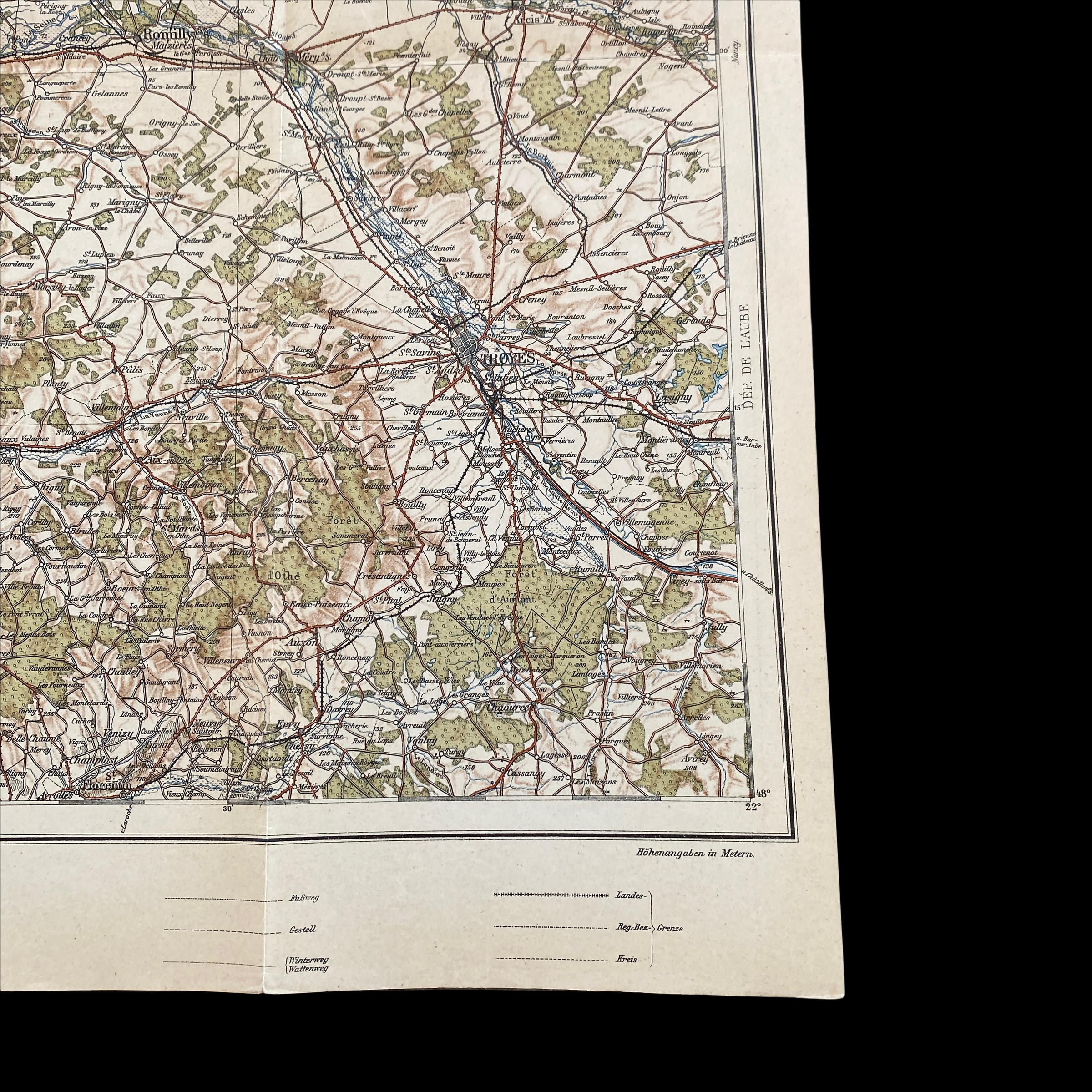
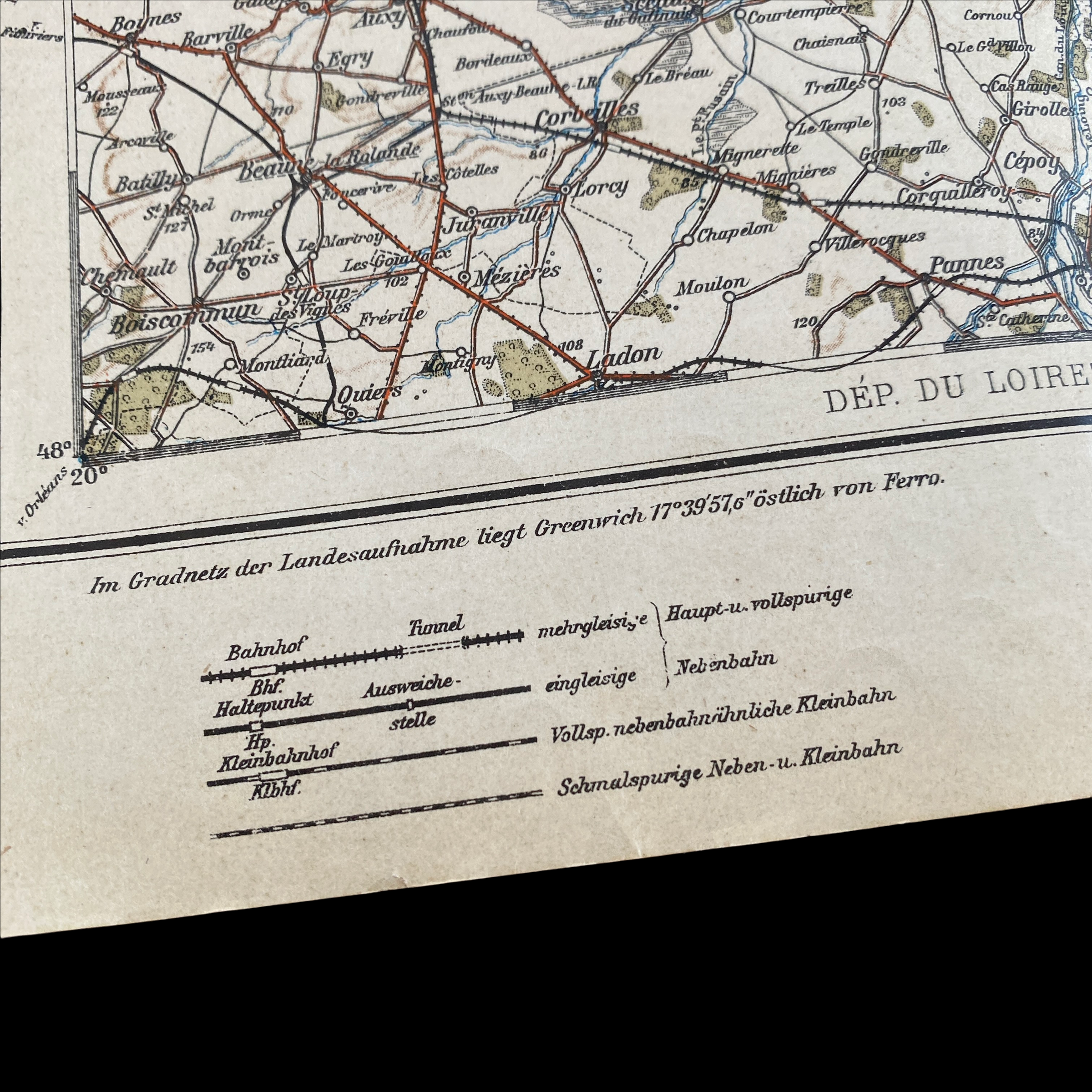


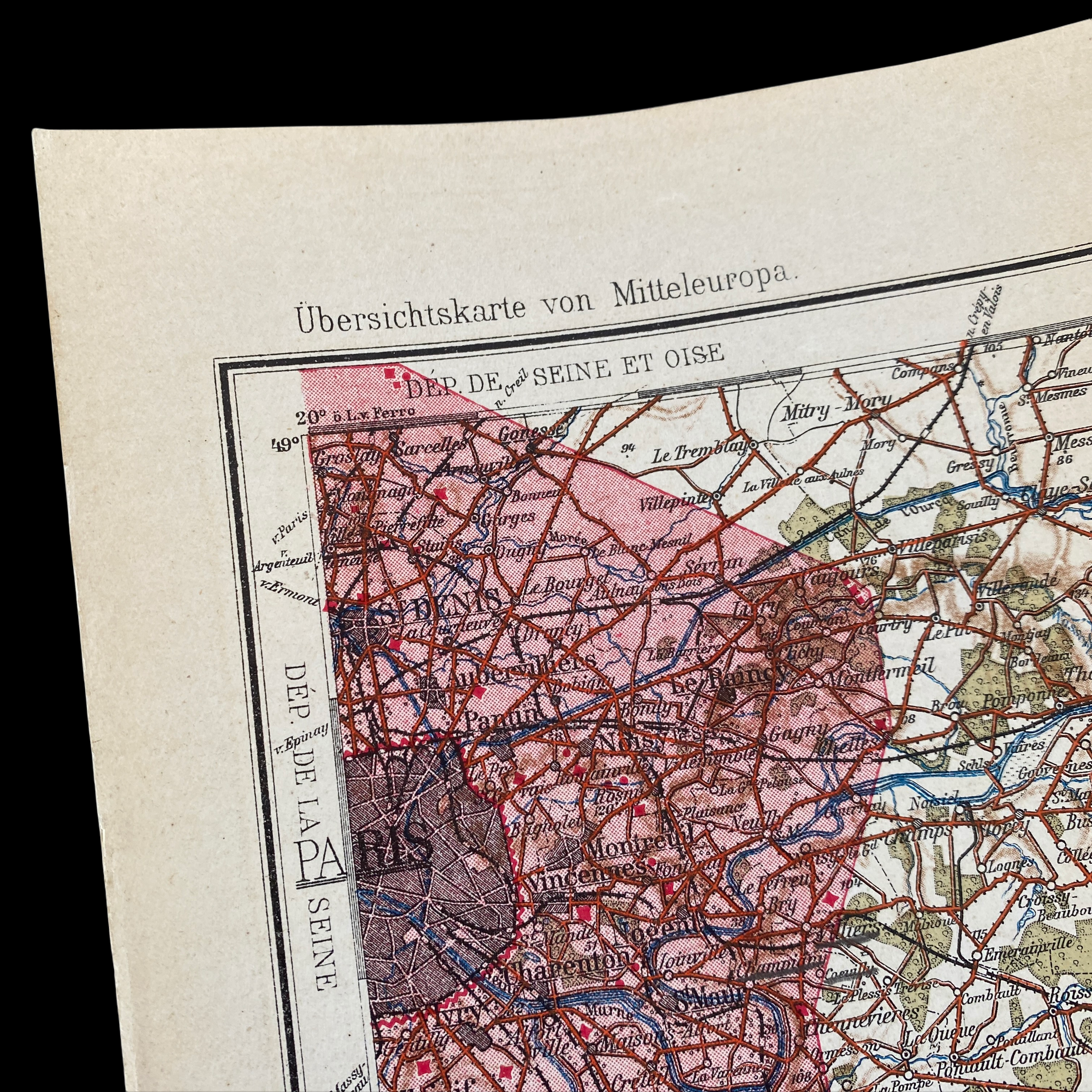










VERY RARE WWI German Zeppelin Corps Paris Airship Aerial Raid Map
Comes with C.O.A.
*Because of the intensity and damage of German Zeppelin raids on Paris during WWI the French Government began to build a fake Paris to trick German Zeppelin airships raids at night!
This incredibly rare museum-grade World War I German Zeppelin Corps "Paris Ost” (Paris East) map is arguably one of the most sought-after maps from the Great War. A very scare print count of these were produced over the course of the war with only a small handful still known to exist today.
Created especially for German strategic bombing and air raids this map was produced for aerial missions over Paris which were carried out by German Zeppelin airships. This sort of attack was a novelty at first. But as the war progressed, these bombing raids increased in intensity. As seen on the map Paris is depicted along with a “transparent red tone” overlay. This very rare overlay of Paris provided German Zeppelin airships with the expected range for which to expect ‘French Anti-Aircraft Gun Batterys’ and the locations of ‘French Military Fortifications’ guarding Paris. The airship map also details extremely vital French railroads, roads, trails, and other large French towns surrounding Paris. Also very notable is when specially folded the outside of the map contains the very rare hand-stamped navigational map chart for easy navigational guides as German airships journeyed to and from their aerial mission raid targets. A BOLD mark is put around the area which the map shows when unfolded. This proved extremely useful and was preferred by the German Zeppelin Corps.
Paris became a primary target for the German airships for a couple of reasons. First, Paris was the closest capital to the frontlines of the war, making it the easiest to attack. The German airships had to fly as little as 30 km to strike at the city. Secondly, the objective of the German offensive into France was Paris. In September 1914, the Germans added nighttime attacks to their routine bombing of Paris. They again escalated their bombing offensive, using Zeppelins in March 1915. The addition of the Zeppelins proved to be the tipping point for the French. The city imposed a black-out to protect against the increased volume of night attacks.
In the early months of World War I, the German military employed their airships, which were capable of traveling 85 miles per hour and hauling two tons of explosives, on bombing raids on the cities of Liege, Antwerp, and Paris. “Nowadays there is no such animal as a non-combatant,” justified German zeppelin corps commander Peter Strasser, “modern warfare is total warfare.
The German air raids on Paris are very famously depicted artworks of French artist Maurice Busset (1879–1936) who turned to an age-old medium—wood-block prints—to portray the 1918 German air raids on Paris in a portfolio he titled Paris Bombardé (Paris Bombarded).
The bombardment of Paris was part of Germany’s Spring Offensive (also known as the Ludendorff Offensive)—a massive attack on the Western Front that brought German forces within 75 miles of Paris. The Germans had bombed Paris before, in 1915 and 1916. But the attacks of 1918 were on a larger, more lethal scale. Beginning January 30, Gotha bombers, which were faster and easier to maneuver than the Zeppelins that had carried out previous air raids, attacked Paris by night. In March, Germany’s colossal “Paris Guns”—cannons specially built to bombard the French capital at the unheard-of range of 75 miles—began shelling the city by day.
Over five months, the Germans flew 44 raids over Paris and dropped a total of 55,000 pounds of explosives on the city, killing 241 people and injuring hundreds more. In comparison, the attacks of 1915 and 1916 had left 34 people dead. The most shocking of the aerial attacks had come on March 29, 1918, Good Friday, when a shell hit the centuries-old Church of St.-Gervais-et-St.-Provais, causing its vaulted roof to collapse and killing 88 worshipers.
By the standards of air raids later in the 20th century, the damage the Paris bombardment caused was minimal. But if the physical damage was slight, the psychological impact was not. The use of air raids and heavy artillery against the city marked a significant break with previous wars. The raids were the harbinger of a new and horrifying form of warfare, in which civilians were intentionally targeted by combatants as a way of breaking the enemy’s morale.